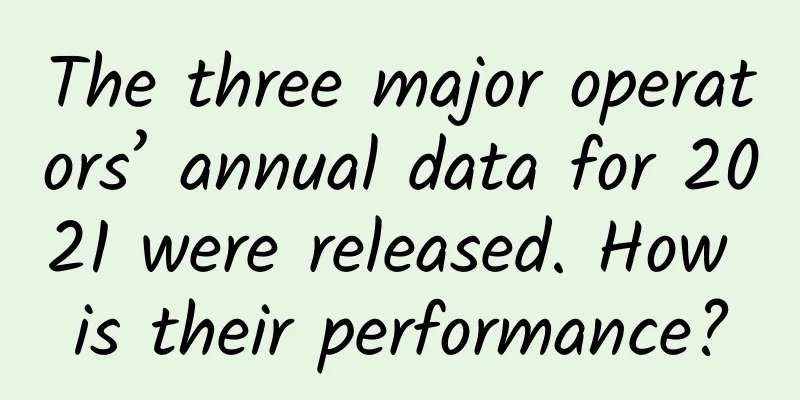Share an interesting data analysis method

|
This film note is a development summary, summarizing the examples of receiving and parsing GPS data, and sharing some thinking processes based on examples: GPS Data ProtocolMost commonly used GPS modules use the NMEA-0183 protocol, which has now become the unified RTCM (Radio Technical Commission for Maritime services) standard protocol for GPS navigation devices. NMEA-0183 is a standard specification designated by the National Marine Electronics Association of the United States. This standard establishes the communication standard between all marine electronic instruments, including the format of transmitted data and the communication protocol for transmitting data. The protocol uses ASCII code to transmit GPS positioning information, which we call frames. The frame format is as follows:
The types of GPS frame data are as follows: In practical applications, not all data can be fully used. We can select the required data according to our needs. Below we take $GPGGA data as an example to share the receiving and parsing methods. The basic format of a $GPGGA statement is as follows:
Here are some examples:
GPS data receptionThe GPS module uses serial communication, so it is necessary to receive data before parsing. I am doing the receiving under the embedded Linux platform, and the interface for reading the serial port is as follows:
Here are three receiving methods I use in practical applications: Method 1: Rough method In order to quickly verify data parsing and run through the entire process, we can first use a rough method to obtain data. In the rough method, we can first ignore the actual number of bytes in a frame of data and roughly set a buffer array for parsing, such as:
The number of bytes read by uart_read each time is related to the thread suspension time. Roughly speaking, we can set up a serial port receive buffer array, such as:
At this time, you need to splice the contents of uart_rx_buf received each time, store them in rx_gps_data, and then parse them. The rough method can be used to quickly verify data parsing and run through the entire process. The disadvantage is that if uart_rx_buf and rx_gps_data are not set reasonably, a large number of data frames may be destroyed. Generally, I am more accustomed to quickly adjusting the entire process first, and then gradually optimizing it. Method 2: State Machine Method The rough method above may destroy some data frames. In addition, the code structure may not be clear enough. To improve these problems, use a state machine to receive. Receive byte by byte, and parse after receiving a complete frame of data. Code such as:
In this way, the gga data can be received completely. Every time the rx_gps_gga_data reaches the GGA_STATE_CHECK1 state, it is the complete gga data, and then it can be parsed. In this step, a flag variable can be set to indicate that the gga data has been completely received, and parsing will not be performed until the data is received. Although this method can receive data relatively well and is very useful in single-chip microcomputers, under the same thread suspension time, each uart_read only obtains one byte, which will reduce the receiving efficiency to a certain extent, which is a bit like robbing Peter to pay Paul. In our application, this conflicts with the timing requirements of the algorithm, so we can only think of other methods. Let's take a look at method 3. Method 3: Timestamp method This method requires to know what data each frame contains and how often the data is output. Under the same thread suspension time, first set the buffer used for uart_read to receive data a little larger, and see how many bytes of data can be read at most each time and how many times the serial port data needs to be read to complete a frame of data. Then we can distinguish each frame of data and each packet of serial port data by time, and repackage them where necessary. For example: the interval between each frame of data is 200ms, the thread suspension time is 10ms, one frame of data has 130 bytes, and one frame of data consists of 1 packet and 2 packets of serial port data. The timestamp can be used to determine whether the interval between each packet is the interval between data frames or the interval between two data packets in each frame of data, and then corresponding logical processing can be performed to receive the data well. GPS Data AnalysisHow to parse GPS data? There may be many methods. Let's first look at the analysis method of the punctual atom: It can be roughly divided into two steps. The first step is to get the position of the comma to determine a field that needs to be parsed, and then convert the string data of the corresponding field into a number. Here is a simple and practical analysis method. The idea is similar to the above, but it is relatively simpler and clearer:
Here we use sscanf + regular expression for parsing.
The sscanf function is very useful for string-related parsing. It is used here with regular expressions. The above code means to take the data before the comma from p_gga and store it in gps_gga_str[i]. Because gga data are separated by commas, all the data can be parsed out by looping several times, which is very convenient. Regular expression learning resources such as:
Let's take a look at some simple uses of sscanf + regular expressions: "1. Get a string of specified length." For example, in the following example, a character string with a maximum length of 4 bytes is taken.
"2. Get the string up to the specified character." As in the following example, the string ends when a space is encountered.
「3. Get a string that contains only the specified character set.」 For example, in the following example, we take a string containing only the numbers 1 to 9 and lowercase letters.
"4. Get the string up to the specified character set." For example, in the following example, the string is retrieved until an uppercase letter is encountered.
The sscanf + simple, easy-to-understand regular expression method can sometimes help us parse string data very conveniently. sscanf + complex regular expressions are not recommended because the code readability is too poor. In addition, it is necessary to write some comments when using sscanf+regular expressions. It is okay if you have seen this method before, but some people who read your code later may not have been exposed to regular expressions and may not understand it for a while. When I was doing internship in my junior year, I saw such code in the company. At that time, my knowledge reserve was not enough. It was the first time I saw the parsing method of sscanf + regular expression, but I couldn't find the relevant answer when searching. So, it is necessary to write some comments in daily life, which is beneficial to others and yourself. refer to: 1. "ATK-NEO-6M GPS Module" information from Zhengdian Atom. 2. https://blog.csdn.net/absurd/article/details/1177092 This article is reprinted from the WeChat public account "Embedded Mixed Potpourri", which can be followed through the following QR code. To reprint this article, please contact the Embedded Mixed Potpourri public account. |
<<: Only 91 base stations were built in two years. Why is 5G millimeter wave so difficult?
Recommend
HostingViet November Offer: Vietnam VPS 30% off for monthly payment/40% off for half-year payment/double configuration for annual payment
Last month, I shared information about HostingVie...
How to collect intranet information
The essence of penetration testing is information...
2G and 3G network retirement countdown, your old mobile phone may have to be thrown away
This also means that 2G and 3G technologies will ...
iWebFusion: US servers starting from $45/month, in Los Angeles/North Carolina/Bend/Monticello and other data centers
iWebFusion (iWFHosting) is a subsidiary of the ve...
Where is the entrance to 5G message service? You may not think of it
Since the Ministry of Industry and Information Te...
If WeChat declines, who will replace it? Big guesses about the Internet in 2018
Where will the major domestic Internet companies ...
An article to reveal the hot and cold knowledge of SRv6, the "newcomer" of the network
IPv6, the "Speed and Furious" of Next...
What do we need to do to make IPv6 a reality?
After the General Office of the CPC Central Commi...
HostXen: DIY cloud hosting available in Hong Kong, the United States, Japan, and Singapore, new user registration with coupons
HostXen is a DIY-configurable cloud server hostin...
How to solve the air pollution problem in data centers?
One might think that the issue of air purity in d...
Software-defined branch network reconstruction can save 80% of costs
As the business tentacles of enterprises in vario...
IDC: Core network infrastructure market growth is slow but stable
According to IDC's Global Ethernet Switch and...
Veteran Network Engineer: Talking about Several Typical Deployments and Practices of SD-WAN
A few days ago, I talked with my colleagues about...
Foreign media: South Korea encourages virtual network operators to participate in 5G competition
South Korea's Ministry of Information and Com...
RAKsmart Bare Metal Cloud/Cloud Server/VPS 30% off, Dedicated Server Limited Flash Sale Starting from $30/month
Coinciding with the Chinese New Year, RAKsmart ha...









